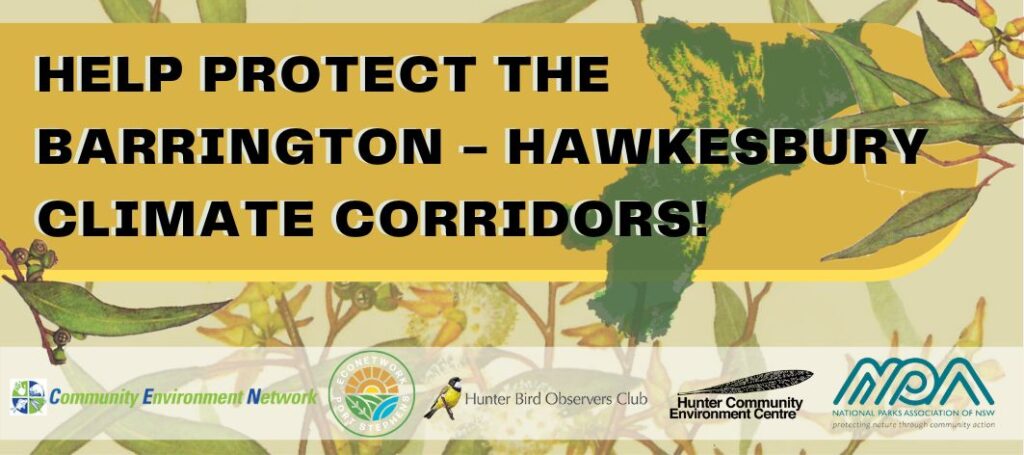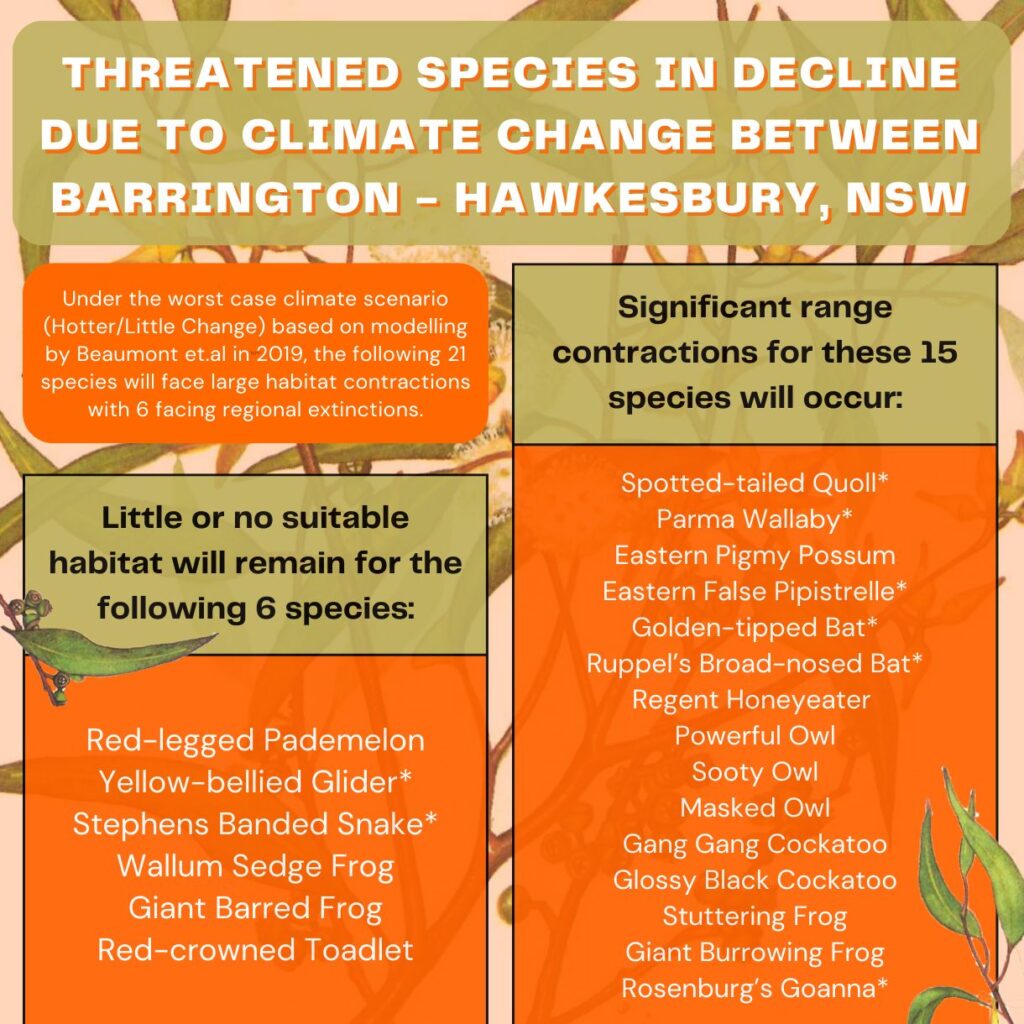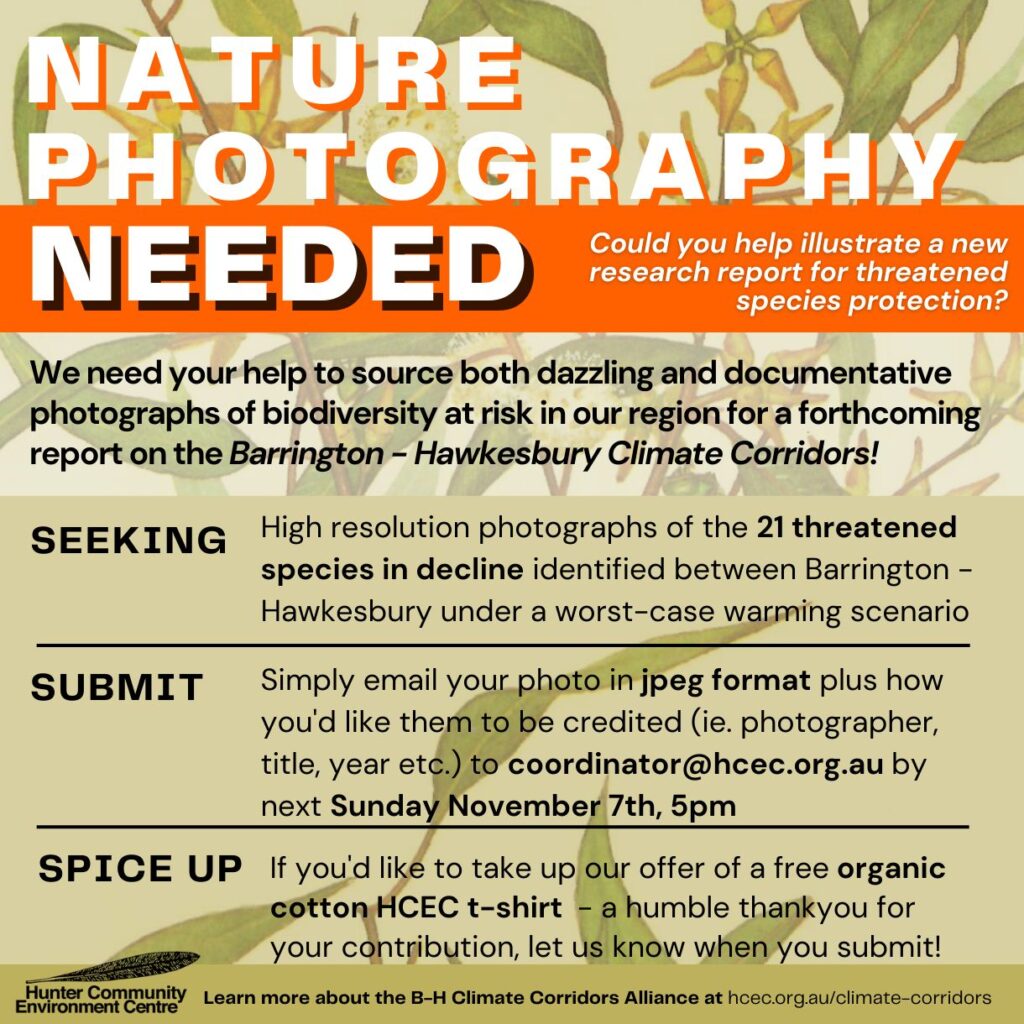
10 November 2022
Dear EcoNetwork Port Stephens,
It was a pleasure to meet some of your members last month at the Picnic for Nature, at which I was invited to share some words on the Barrington to Hawkesbury Climate Corridors Alliance.
In mid-2022 representatives from the Community Environment Network, EcoNetwork Port Stephens, Hunter Community Environment Centre, Hunter Region National Parks Association and Hunter Bird Observers Club came together in response to the noticeable increase in the destruction of bushland and threatened species habitat from land clearing to accommodate urban developments – our research has since revealed that almost 100,000 ha of native vegetation was lost in NSW in 2020, marking a seven-year increase of over 60 percent.
The dire assessment and forecasts for threatened species, and the overall poor state of our environment presented in the latest NSW and Australian State of the Environment Reports earlier this year, as well as the increased scrutiny on the ineffectiveness of the current biodiversity protection and conservation laws, spurred the alliance to form and embark on the research that underpins a bold conservation and climate adaptation strategy for threatened species populations across the region spanning the Central Coast, Lake Macquarie, Cessnock, Newcastle, Port Stephens, Dungog, and the former Great Lake Council area of Mid Coast LGA’s.
As climatic conditions change in the coming decades, the persistence of many populations of native species will depend on their ability to colonise newly suitable habitat.
As we know, the coastal region between Barrington Tops and the Hawkesbury River is ecologically diverse, but it is also strategically placed for the translocation of species as climatic conditions shift in the coming decades, encompassing an overlap between tropical and temperate zones at the geographic limits of many species.
The pressing need to assist our threatened species populations to adapt to a warming world is explored in an upcoming report from the alliance, containing arguments and a vision for threatened species conservation in our region already under immense pressure from agriculture, forestry, and urban development.
Using habitat modelling published in the report Identifying climate refugia for key species in New South Wales – Final report from the BioNode of the NSW Adaptation Hub, Macquarie University, Sydney, Australia, our report presents the fate of 48 threatened species between 2020 and 2070 in the Barrington to Hawkesbury region, with the worst-case scenario modelled resulting in up to 6 regional extinctions, with 21 species facing significant range contractions.
In the coming weeks, the alliance will launch the report, and invite a public push to protect the climate corridors in the Barrington to Hawkesbury region to ensure our protected areas network can accommodate the most vulnerable threatened species populations under the worst-case climate scenario.
We encourage you to sign-up to receive your invitation to the launch, and to get active with the alliance in the coming months.
Finally, to any nature photographers out there, we have an active call for nature photography to assist us to illustrate the report with beautiful images of the species central to this work! If you have images of any of the key threatened fauna species, I hope to hear from you!
Jo Lynch
HCEC Coordinator
coordinator@hcec.org.au


